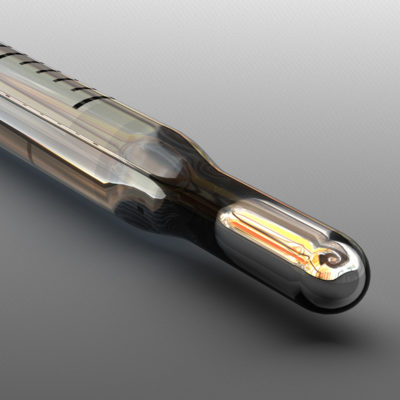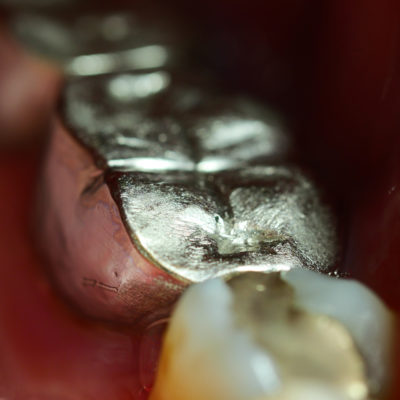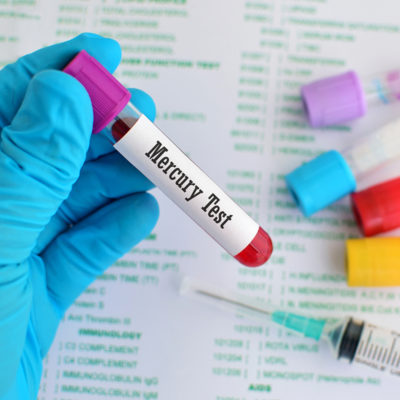Last Updated on January 27, 2022 by
Alternative to Meds Editorial Team
Medically Reviewed by Dr Michael Loes MD
Table of Contents:
Last Updated on January 27, 2022 by
Alternative to Meds Editorial Team
Medically Reviewed by Dr Michael Loes MD
Commonly found in nature, mercury is a rare element found in the earth’s crust. It’s a naturally occurring metal that can take both a solid and liquid form. In the past, mercury was used in thermometers, temperature and pressure gauges, and even light switches in people’s homes. More recently, CFL light bulbs became touted as a way to save the environment, until the problem of mercury vapors proved them hazardous if they ever broke in the home, and difficult to dispose of safely.9
It wasn’t until studies were done, that the harmful effects of mercury exposure were more fully understood. Commercial use of mercury in mining, mirror manufacturing, and processing fur used in hat making was causing kidney failure, lung damage, and other potentially life-threatening conditions from daily exposure to mercury. With the first documented case of mercury poisoning back in 18651, it was revealed that mercury exposure can be lethal.

You may find mercury in:2
Mercury is still used in many of your common household items even today. Potentially harmful or toxic effects occur when these products crack or break, off-gas or spill, exposing anyone nearby to accidental poisoning. Mercury poisoning can happen from breathing in vapors, skin absorption, and accidental ingestion. Dentists and school children are two populations who have been documented as particularly at risk for mercury exposures.10,11
Elemental mercury can easily cross blood/brain and placental barriers and enter nursing mothers’ breast milk. It is a potent neurotoxin that can impact the central nervous system. A few of the neurological ramifications can be slurred speech, tremors, mood swings, excessive shyness, irritability, insomnia, loss of coordination, and more.
Inorganic mercury can enter the mouth and body through products such as disinfectants and fungicides. Inorganic mercury can harm the GI tract, as well as the kidneys and nervous system. Exposure to this compound can cause dermatitis and/or rashes, mood swings, memory loss, mental anxiety, and muscle weakness.
Organic mercury is the compound most often found in nature. Organic mercury goes through a biological bacterial process, converting it to an inorganic compound in rivers, streams and oceans, impacting all fish and sea life. Individuals who ingest fish regularly are exposed to this kind of mercury. According to a JAMA Pediatrics study, the FDA and EPA warned expecting mothers back in 2004 to avoid the consumption of fish due to concerns about methylmercury. Then, in 2017, these recommendations were inexplicably reversed — pregnant and breastfeeding women, as well as children, were encouraged to consume more fish. What hasn’t changed is that methylmercury is still a known neurotoxin that can cross the blood/brain and placental barriers, and increase the risk of birth defects, neurological problems, and developmental delays.12
An increase in North American consumption of fish has caused a significant rise in higher levels of mercury in humans. Mercury emissions have been a long-time global issue depositing toxic fumes into the atmosphere and oceans and waterways. This has increased health issues in humans and has also drastically impacted wildlife. Virtually all fish around the world now have detectable levels of methylmercury, some more than others. Many fish with higher levels of mercury are the larger, predatory species, as their position in the food chain means they have consumed many smaller fish resulting in a bio-magnified rising toxicity level:
The over-consumption of fish that are high in methylmercury can result in the development of severe or even fatal effects in your kidney, lungs, digestive tract, or cardiovascular system, as well as neurological impacts.
Lower mercury levels have been found in Arctic char, Atlantic mackerel, rainbow trout, salmon, and sardines.13

To fix a cavity, a dentist drills the tooth to remove decayed enamel. The dentist then inserts amalgam to fill the cavity. The amalgam filling consists of liquid mercury mixed with other metals such as tin, silver, or copper. About half4 of all dental amalgam used is elemental mercury by weight.
Health Canada reported growing concern and decreasing use of mercury-based amalgam as far back as 1996.21 There are a number of significant risks with dental amalgams5 especially for pregnant women. Some of the most commonly reported22 include headache, fatigue, skin conditions, immune system impairment, renal problems, nerve atrophy, psychological issues like anger, depression, nervousness, anxiety, mood swings, tremors, and insomnia.
Elemental mercury will slowly release levels of mercury as a vapor. This vapor can be breathed and make its way into the lungs, where it is absorbed and can migrate into other tissues and organs. Exposure to even low levels of elemental mercury is associated with adverse effects on the brain, kidneys, and elsewhere. Dental procedures are often performed on young, neurologically undeveloped children who are perhaps most susceptible to the mercury vapor’s neurotoxic effects. Studies confirm that certain populations should be protected from the risks of neurotoxin exposures in dentistry, or other sources, for example:
Finding an alternative method or treatment to address a cavity or infected tooth should be considered, especially for those populations above. The FDA strongly advises individuals who are at high risk to try mercury-free restorations (fillings).

Experiencing one or more of these symptoms could signal some level of mercury poisoning. A visit to your dentist would be prudent to discuss the best course of action. In an emergency situation, feelings of suicide and depression, or physical ailments such as pain in the kidneys or abdomen, immediate medical attention by practitioners who are familiar with toxic adverse effects is strongly recommended.
Learn how Neurotoxin Removal can improve your life.
Mercury damages neurons in the brain and other parts of the CNS. Mercury prohibits neurotransmitters such as dopamine, serotonin, and norepinephrine from binding to specific sites in the brain. Even more devastating is that many dentists themselves suffer from depression and suicide working with these materials daily — with dental professionals having had far more mercury in their systems6 than the general population. Some of the other contributing factors for mercury triggering depression and anxiety disorders are as follows:
The risk of toxic exposure on the patient from dental amalgam treatment is clear. However, dentists are melting down these metals sometimes daily, further exposing themselves to these symptoms, often more severely. Ranked the eleventh highest in suicide rates amongst other medical occupations, dentists sit through countless appointments handling a variety of metals toxic to humans. Please be aware that mercury is found in many food sources, including seafood and plants in locations where mercury pollution is present in the soil.
To avoid further toxic exposure, seek out a holistic dentist. Holistic dentistry is an alternative form of dentistry that understands how oral health affects the body as a whole. It focuses on treating the root issues, including nutrition for oral health and not just the immediate pain or ache. Holistic dentistry takes into account how physical, emotional, and spiritual health are all related, thus, they focus on more than just oral care alone.
Holistic dentists may treat the jaw, teeth, gums, and areas of the head and neck. Utilizing a variety of treatments, such as herbology, nutrition education, aromatherapy, Ayurveda, and others, holistic dentistry focuses on the full spectrum of care. While still performing routine cleanings, flossing, and fillings, they avoid some potentially harmful practices found in traditional dentistry.
For example, traditional dentistry might treat tooth decay with mercury amalgams and fluoride treatments, whereas a holistic dentist may fill the cavity with non-toxic material, but may also test for diabetes, or recommend exercise aimed toward improving cardiovascular health because of the links between oral health and heart health. Holistic dentists reject the use of fluoride, because of studies showing fluoride reduces children’s IQ, weakens bones, increases the risk of fractures, can cause white spots on teeth, and may harm the thyroid.
Holistic dentists apply techniques like:
Holistic dentistry, also commonly known as integrative dentistry, focuses on oral health problems as they relate to total body health.
If you prefer having a clear understanding and knowledge of what you are placing in your body, then a holistic dentist might be a great option for you. Focusing on natural remedies, avoiding mercury or fluoride, utilizing biocompatible materials, and employing alternative therapies, are just a few snapshots of the full spectrum of care they can provide for their patients. Whole heart treatment is the end goal for any doctor who specializes in holistic medicine.
While the FDA (Food and Drug Administration) approves the use of mercury in many products, the approval of dental amalgams to this day is baffling. Alternatives like mercury-free fillings, cleaner foods, and using products free from neurotoxins can provide healthier choices.

If you are worried that mercury may be an issue related to anxiety, depression, insomnia, OCD, or other unwanted symptoms, please feel free to reach out and speak with one of our representatives. We specialize in helping people holistically detox the body from harmful neurotoxins. Reach out anytime to learn more and see if Alternative to Meds Center can help you with your health concerns.
1. Barrett JR. An uneven path forward: the history of methylmercury toxicity research. Environ Health Perspect. 2010;118(8):a352. doi:10.1289/ehp.118-a352b [cited 2021 Sept 16]
2. Wisconsin Mercury Guidance Manual (PDF)
3. NY Gov Dept of Environmental Conservation Report, “What do you know about Mercury?” [online] [cited 2021 Sept 16]
4. FDA Report, “Dental Amalgam Fillings” [online] 02/18/2021 [cited 2021 Sept 16]
5. Chaari N, Chebel S, Merchaoui I, Kerkeni A, Neffati F, Najjar F, Akrout M. Neuropsychological Effects of Mercury Exposure Among Dentists in Monastir City. Recent Pat Inflamm Allergy Drug Discov. 2015;9(2):151-8. doi: 10.2174/1872213×10666151119145142. PMID: 26581313.[cited 2021 Sept 16]
6. Nagpal N, Bettiol SS, Isham A, Hoang H, Crocombe LA. A Review of Mercury Exposure and Health of Dental Personnel. Saf Health Work. 2017;8(1):1-10. doi:10.1016/j.shaw.2016.05.007 [cited 2021 Sept 16]
7. Crane GD, Abbott PV. Radiation shielding in dentistry: an update. Aust Dent J. 2016 Sep;61(3):277-81. doi: 10.1111/adj.12389. PMID: 26644147.[cited 2021 Sept 16]
8. Park JD, Zheng W. Human exposure and health effects of inorganic and elemental mercury. J Prev Med Public Health. 2012;45(6):344-352. doi:10.3961/jpmph.2012.45.6.344 [cited 2021 Sept 16]
9. Salthammer T, Uhde E, Omelan A, Lüdecke A, Moriske HJ. Estimating human indoor exposure to elemental mercury from broken compact fluorescent lamps (CFLs). Indoor Air. 2012 Aug;22(4):289-98. doi: 10.1111/j.1600-0668.2011.00764.x. Epub 2012 Jan 17. PMID: 22188528. [cited 2021 Sept 16]
10. Finkelstein Y, Vardi J, Kesten MM, Hod I. The enigma of parkinsonism in chronic borderline mercury intoxication, resolved by challenge with penicillamine. Neurotoxicology. 1996 Spring;17(1):291-5. PMID: 8784840. [cited 2021 Sept 16]
11. Akyildiz BN, Kondolot M, Kurtoğlu S, Konuşkan B. Case series of mercury toxicity among children in a hot, closed environment. Pediatr Emerg Care. 2012 Mar;28(3):254-8. doi: 10.1097/PEC.0b013e3182494ed0. PMID: 22344215. [cited 2021 Sept 16]
12. Bramante CT, Spiller P, Landa M. Fish Consumption During Pregnancy: An Opportunity, Not a Risk. JAMA Pediatr. 2018;172(9):801-802. doi:10.1001/jamapediatrics.2018.1619 [cited 2021 Sept 16]
13. Abelsohn A, Vanderlinden LD, Scott F, Archbold JA, Brown TL. Healthy fish consumption and reduced mercury exposure: counseling women in their reproductive years. Can Fam Physician. 2011;57(1):26-30. [cited 2021 Sept 16]
14. Rossini S, Reimao R, LeFevre B, Medreado-Faria M, “Chronic Insomnia in Workers Poisoned by Inorganic Mercury: psychological and adaptive aspects.” published 3 April, 2000 [online] [cited 2021 Sept 16]
15. Brock H, Hany M. Obsessive-Compulsive Disorder. [Updated 2021 Jun 7]. In: StatPearls [Internet]. Treasure Island (FL): StatPearls Publishing; 2021 Jan-. Available from: https://www.ncbi.nlm.nih.gov/books/NBK553162/ [cited 2021 Sept 16]
16. Rice KM, Walker EM Jr, Wu M, Gillette C, Blough ER. Environmental mercury and its toxic effects. J Prev Med Public Health. 2014;47(2):74-83. doi:10.3961/jpmph.2014.47.2.74 [cited 2021 Sept 16]
17. Zimmermann LT, Santos DB, Naime AA, et al. Comparative study on methyl- and ethylmercury-induced toxicity in C6 glioma cells and the potential role of LAT-1 in mediating mercurial-thiol complexes uptake. Neurotoxicology. 2013;38:1-8. doi:10.1016/j.neuro.2013.05.015 [cited 2021 Sept 16]
18. Siblerud RL, Motl J, Kienholz E. Psychometric evidence that mercury from silver dental fillings may be an etiological factor in depression, excessive anger, and anxiety. Psychol Rep. 1994 Feb;74(1):67-80. doi: 10.2466/pr0.1994.74.1.67. PMID: 8153237.[cited 2021 Sept 16]
19. Bose-O’Reilly S, McCarty KM, Steckling N, Lettmeier B. Mercury exposure and children’s health. Curr Probl Pediatr Adolesc Health Care. 2010;40(8):186-215. doi:10.1016/j.cppeds.2010.07.002[cited 2021 Sept 16]
20. Murata K, Weihe P, Budtz-Jorgensen E, Jorgensen P, Grandjean P, “Delayed brainstem auditory evoked potential latencies in 14-year-old children exposed to methylmercury.” Journal of Pediatrics Vol 144 Issue 2, P177-183 Feb 01, 2004 [cited 2021 Sept 16]
21. Health Canada “1996 Health Canada Position Statement on Dental Amalgam” [online] [cited 2021 Sept 16]
22. IAOMT Report, “Mercury Poisoning Symptoms and Dental Amalgams” [online] [cited 2021 Sept 16]
What Is Arsenic?
Psychometric evidence that mercury from silver dental fillings may be an etiological factor in depression, excessive anger, and anxiety
Neuropsychological Effects of Mercury Exposure Among Dentists in Monastir City
Mercury Poisoning Symptoms & How to Avoid or Recover from Them
Could Mercury Toxicity Be Causing Your Symptoms?
3 Toxic Chemicals Tied to Depression: Symptoms You Need to Recognize (Part 3 of 3)
Mechanisms of methylmercury-induced neurotoxicity: evidence from experimental studies
How to Do a Mercury Detox: Your Ultimate Guide
How to Get Mercury Out Of Your System
Originally Published Sept 10, 2021 by Lyle Murphy

Dr. Michael Loes is board-certified in Internal Medicine, Pain Management and Addiction Medicine. He holds a dual license in Homeopathic and Integrative Medicine. He obtained his medical doctorate at the University of Minnesota, Minneapolis, MN, 1978. Dr. Loes performed an externship at the National Institute of Health for Psychopharmacology. Additionally, he is a well-published author including Arthritis: The Doctor’s Cure, The Aspirin Alternative, The Healing Response, and Spirit Driven Health: The Psalmist’s Guide for Recovery. He has been awarded the Minnesota Medical Foundation’s “Excellence in Research” Award.

Lyle Murphy is the founder of the Alternative to Meds Center, a licensed residential program that helps people overcome dependence on psychiatric medication and addiction issues using holistic and psychotherapeutic methods.

Can you imagine being free from medications, addictive drugs, and alcohol? This is our goal and we are proving it is possible every day!
Read All StoriesView All Videos